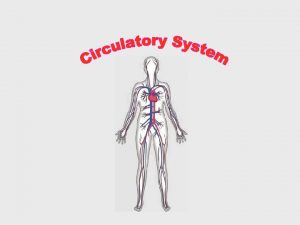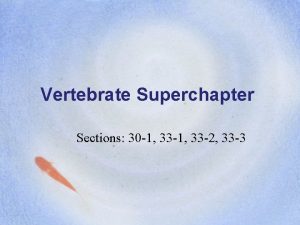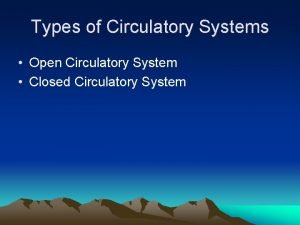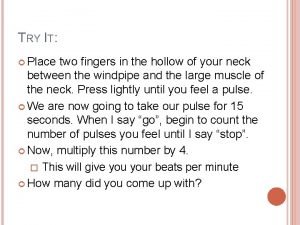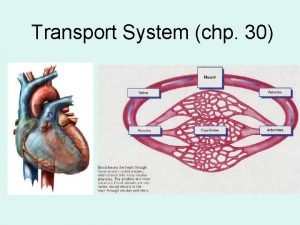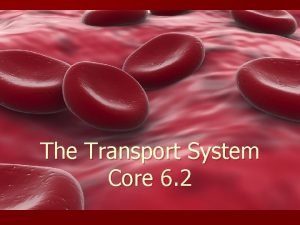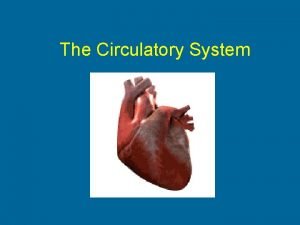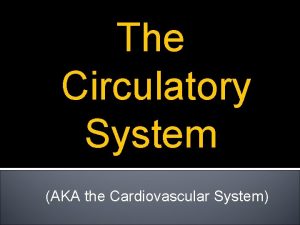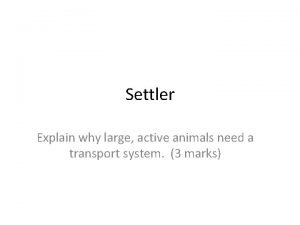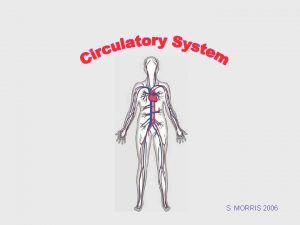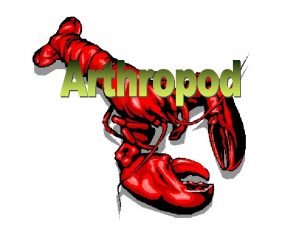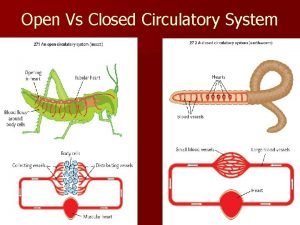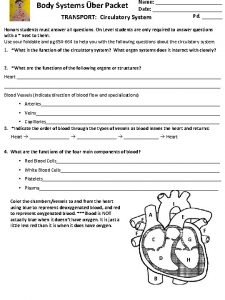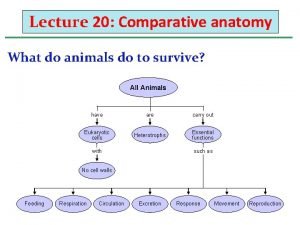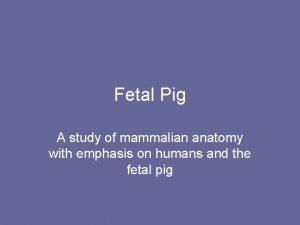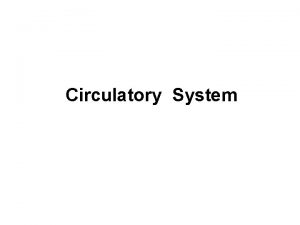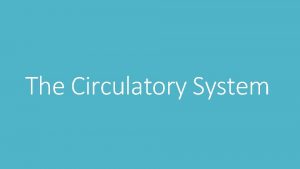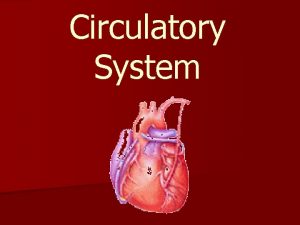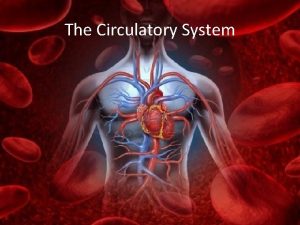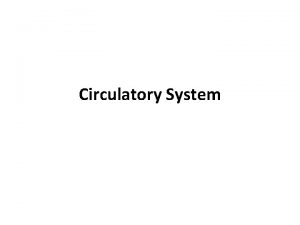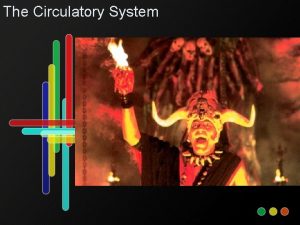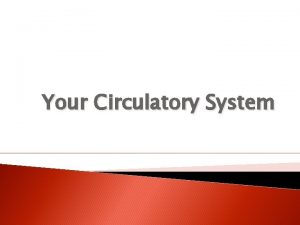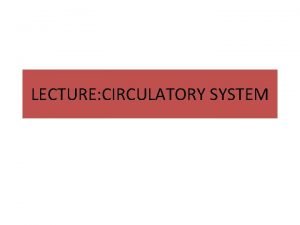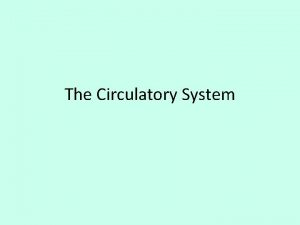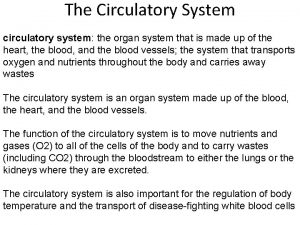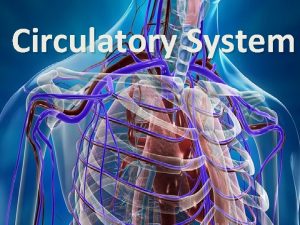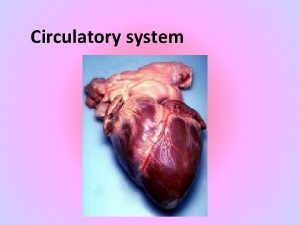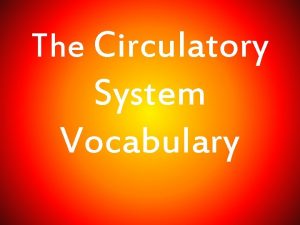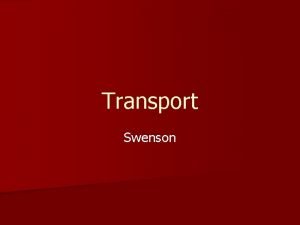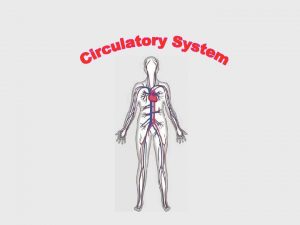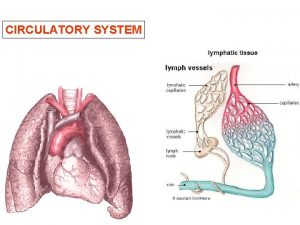3 2 The Circulatory System The Circulatory System






















- Slides: 22

3. 2 The Circulatory System

The Circulatory System is responsible for transporting substances throughout the body. This is the organ system made up of the heart, blood vessels, and blood. The Circulatory System Video: http: //www. youtube. com/watch? feature=pla yer_embedded&v=D 3 ZDJg. FDdk 0

Circulatory System is responsible for transporting substances throughout the body.

Blood is a type of connective tissue made up of 4 parts: 1. Red blood cells 2. White blood cells 3. Platelets 4. Plasma


1. Red Blood Cells What it Description looks like Red blood cells make up half of the blood by volume. They are bright red and lack a nuclei. Function/Role Contain hemoglobin, a protein that picks up oxygen and carbon dioxide.

2. White Blood Cells What it Description looks like Function/Role White blood Fight and cells make up destroy disease half only 1% of causing bacteria blood by volume. and viruses.

3. Platelets What it Description looks like Platelets make up less than 1% of blood by volume. Function/Role Small cells that help blood clot, seal wounds and stop bleeding.

4. Plasma What it Description looks like Plasmas is the protein-rich liquid in which blood cells float. It makes up half of the blood by volume. Function/Role Carries blood cells, dissolved wastes, nutrients and hormones.

VIDEO: Blood Component Processing http: //www. youtube. com/watch? v=YMTt. S 2 Bbeh. I

The Heart The heart is organized into 4 chambers: 2 upper chambers and 2 lower chambers The human heart takes blood in from the lungs (the upper chambers) and pumps it throughout the body (the lower chambers). Heart muscles are controlled by pacemaker cells which send out an electrical signals telling them when to contract. When resting, heart beats 50 -100 times per minute. During physical activity, your body needs more oxygen and your heart beats faster.



The upper chambers of the heart take in blood from the body and the lungs. The lower chambers pump it into the lungs or to the rest of the body to supply oxygen to our cells.

Blood Vessels Blood vessels make up a network of tubes that carry blood through the body. 3 types of blood vessels: 1) Arteries – large muscular vessels that carry blood away from the heart under pressure. Thick muscular walls. 2) Veins – large vessel that carries blood toward the heart under low pressure. 3) Capillaries – tiny thin-walled vessel that allow the exchange of gases, nutrients, and wastes between the blood and body tissues.


The Circulation of Blood • The blood flows through the circulatory system in a closed pathway similar to the figure 8. • The pathway passes through the heart 2 times: once through the left side and then once the right side.

The blood flows through the circulatory system in a closed pathway similar to the figure 8.

Pathway of Blood RIGHT SIDE = pumps blood to lungs. LEFT SIDE = blood moves from lungs to heart Blood pumps to lungs and gas exchange takes place in the lungs: blood absorbs oxygen and gives off carbon dioxide. Oxygen-rich blood then travels back from the lungs into the left side of the heart.

Pathway of Blood (cont. ) • The heart then pumps the blood to the rest of the body through the arteries. • The arteries then divide into smaller vessels and then even smaller capillaries. • From the capillaries, oxygen and other substances diffuse out of the blood into surrounding tissues into the blood. • The blood then flows from the capillaries into the veins. • It completes the circuit returning to the right side of the heart.

Pumping Blood https: //www. youtube. com/watch? v=JA 0 Wb 3 gc 4 m. E

Homework
 Digestive system respiratory system and circulatory system
Digestive system respiratory system and circulatory system Tiny air sacs at the end of the bronchioles
Tiny air sacs at the end of the bronchioles Circulatory system and respiratory system work together
Circulatory system and respiratory system work together Circulatory system steps in order
Circulatory system steps in order Superchp
Superchp Lungfish circulatory system
Lungfish circulatory system Circulatory system of clams
Circulatory system of clams Horse heart
Horse heart Circulatory system function
Circulatory system function Closed circulatory system
Closed circulatory system Main parts of circulatory system
Main parts of circulatory system Smallest blood vessel
Smallest blood vessel Active animals
Active animals How circulatory system work
How circulatory system work What makes up the cardiovascular system
What makes up the cardiovascular system Gas exchange lungs
Gas exchange lungs Single circulation and double circulation
Single circulation and double circulation Arthropods respiratory system
Arthropods respiratory system Arthropoda
Arthropoda Open circulatory system vs closed
Open circulatory system vs closed Circulatory system foldable
Circulatory system foldable Invertebrate circulatory system
Invertebrate circulatory system Andometr
Andometr



